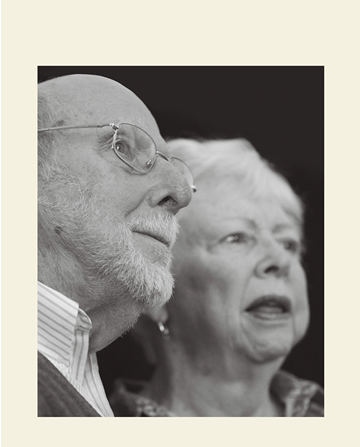Looking Forward: Together
Making real and sustainable change is a team effort. That’s why the Hartford Foundation has been firmly committed for more than three decades to partnerships that advance our mission to improve the health of older adults.
Successful collaborations embrace risk (and even the prospect of failure)—relying on a shifting amalgam of contributions from a diverse array of organizations, institutions, and government agencies. In this report, we have shared the stories of numerous partnerships that demonstrate how harnessing the creativity, knowledge, experience, and support of forward-thinking government agencies, foundations, organizations, institutions, and entrepreneurial individuals results in accomplishments far greater than we could hope to attain with our own limited resources. And we have seen how certain bedrock principles—shared vision, shared commitment, mutual trust, clear and frequent communication, and measurable results—are woven throughout these successful partnerships.
Fact: The number of beneficiaries enrolled in both the Medicare and Medicaid programs is expected to increase from the current 9 million to 11 million by 2020.
The role the Foundation has played—first in supporting biomedical research and, for the past 30 years, aging and health—has not only led to groundbreaking research and interventions, but helped facilitate the federal government’s move to invest more in these critical areas. The result is that the federal government has become an extremely important partner in the Foundation’s work, with agencies as varied as the National Institute on Aging, Department of Veterans Affairs, Administration for Community Living, and the Corporation for National and Community Service all playing key roles. In the private sector, we continue to seek new philanthropic partners, and we rely on and appreciate the generosity and insights this growing number of funders brings to our common work.

As we shift to the “downstream” model of grantmaking detailed in our strategic plan, partnerships will continue to be central to our efforts to put geriatrics expertise to work in health care delivery and practice change. We will actively seek out new partners in areas ranging from health systems to workforce. Some will share our commitment to aging and health, while others will share common ground on a specific project or program.
We will continue to be guided by the principles that have guided us for decades, following our founder’s enduring advice to “carve from the whole vast spectrum of human needs one small band that the heart and mind together tell you is the area in which you can make your best contribution”—working to improve the health of older Americans.